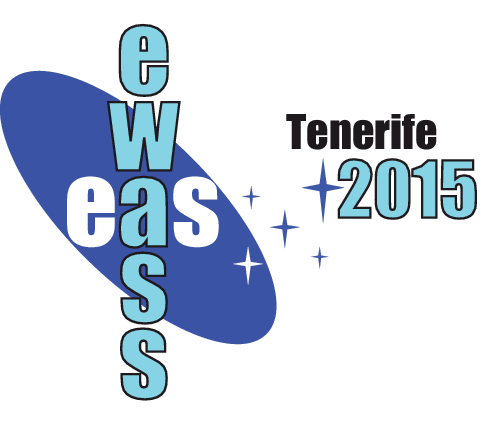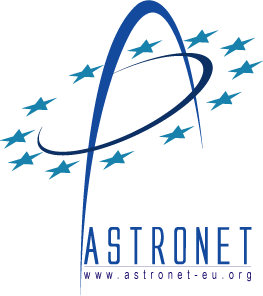Special Session Sp6
26 June 2015
Robotic telescopes and instrumentation for time domain astronomy
Aims and scope
The past decade has seen robotic telescopes increasingly employed for the study of the time variable sky. Arrays of small telescopes covering large fields-of-view have proved to be powerful tools for the discovery of explosive transients (for example the MASTER robotic
network) and transiting exoplanets (SuperWASP). The rapid reaction and flexible, remote scheduling capabilities of larger aperture robotic facilities such as the 2-metre Liverpool Telescope, based on La Palma, makes them powerful tools for the exploitation of time variable
objects such as supernovae, gamma ray bursts, exoplanets and binary stars.
The next decade will see time domain science becoming an even more prominent part of the astronomical agenda. On the discovery side of things, new European facilities such as the Next Generation Transit Survey (NGTS) will build on the success of the SuperWASP project. New goals for the time domain community include the discovery of electromagnetic counterparts to astrophysical gravitational wave sources, and proposed facilities such as GOTO and BlackGEM aim to use dedicated arrays of small, independently pointed telescopes to address the large positional uncertainty of any gravitational wave detection.
The diversity of new survey missions on the horizon provides unprecedented opportunities for robotic follow-up and scientific exploitation. In the field of exoplanet science, NGTS and the next generation of space missions such as PLATO will build on the work of Kepler by discovering more planets with bright host stars in order to maximise the potential of ground based follow-up. The STELLA Robotic Observatory on Tenerife is a precursor for a potential PLATO follow-up facility dedicated to stabilized hi-resolution echelle spectroscopy for radial velocity studies and the characterization of exoplanet host stars. The GREGOR solar telescope is also in the process of being equipped with a high resolution spectrograph for night-time robotic operations. The first telescope of the Stellar Observations Network Group (SONG) was also recently inaugurated on Tenerife. This 1-metre telescope is the prototype of a modern, global network of robotic telescopes, and will address a wide range of time domain topics, with a particular focus on exoplanet follow-up and the study of the internal structure and evolution of stars via asteroseismology.
For transient science, the next generation of synoptic surveys such as LSST will discover huge numbers of targets and facilities such as LOFAR, SKA and CTA will probe transient phenomena at previously unexplored wavelengths. An increasingly important part of time domain science will be the software challenges of rapid classification in order to make best use of available follow-up facilities. This new era of transient astronomy will demand deeper and an even more rapid reaction capability, and to that end plans are underway for a 4-metre robotic successor to the Liverpool Telescope, to come into operation on La Palma ~2020.
Programme
In this session we aim to address how current and future robotic facilities meet the scientific needs of the European time domain community. Examples of the topics we would aim to cover include (but are not limited to):
- New robotic facilities for time domain science
- Upgrades for existing facilities
- Automated transient classification
- Linking transient discovery with rapid follow-up
- Robotic telescopes in the era of multi-messenger astronomy
- Novel detector technologies for rapid reaction
Invited speakers
- L. Abe (Universite de Nice)
- N. Volgenau (LCOGT)
- P. Wheatley (University of Warwick)
Scientific organisers
M.F. Bode (Liverpool John Moores University, UK)
C.M. Copperwheat (Liverpool John Moores University, UK)
C.J. Davis (Liverpool John Moores University, UK)
L.J. Goicoechea (Universidad de Cantabria, Spain)
I.A. Steele (Liverpool John Moores University, UK)
K. Strassmeier (Leibniz-Institut für Astrophysik Potsdam, Germany)
Contact
c.m.copperwheat @ ljmu.ac.uk
Updated on Fri Feb 13 11:39:06 CET 2015
|

 A power cut will shut down all EAS services on Tuesday, 10 January 2017 starting at 7:30 CET.
A power cut will shut down all EAS services on Tuesday, 10 January 2017 starting at 7:30 CET.


















